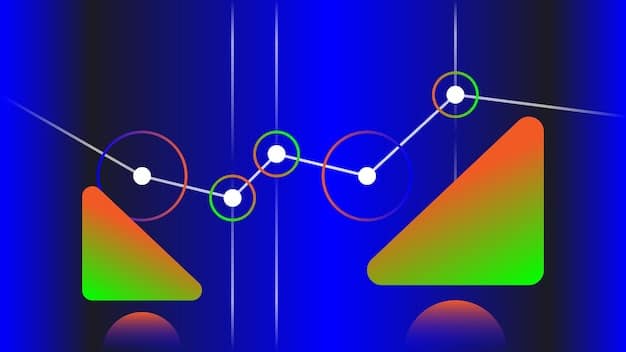Unlock Your Memory: Spaced Repetition Secrets of Memory Athletes

Memory athletes use spaced repetition, a technique that optimizes intervals between reviews to enhance long-term retention, enabling them to recall vast amounts of information efficiently.
Discover the insider secrets: how memory athletes use spaced repetition to retain information for years. This powerful technique, optimizing learning through strategic review intervals, is key to unlocking enhanced memory and long-term retention.
The Power of Spaced Repetition for Memory Enhancement
Spaced repetition is a learning technique that involves increasing the intervals of time between subsequent reviews of previously learned material. This strategy exploits the psychological spacing effect, leading to better long-term retention compared to massed learning, or cramming.
The Spacing Effect Explained
The spacing effect demonstrates that our brains learn more effectively when we review information at increasing intervals rather than studying it intensively in a short period. This forces the brain to actively recall the information, strengthening memory traces.
The spacing effect highlights the advantage of incremental learning and the benefits of revisiting knowledge periodically. It emphasizes the importance of planned review and distributed practice for strengthening memory consolidation and recall.
How Spaced Repetition Works
The process involves initially reviewing new information shortly after learning it, followed by subsequent reviews at increasing intervals. This approach helps move information from short-term to long-term memory effectively.
- Initial Review: Review material soon after the initial learning session to reinforce the memory.
- Increasing Intervals: Gradually increase the time between reviews, challenging the brain to recall the information.
- Active Recall: Each review session should involve an active effort to recall the information, strengthening neural connections.
By actively engaging with the material and spacing out review sessions, memory athletes harness the power of spaced repetition to achieve remarkable feats of recall. This approach optimizes learning, making retention more efficient and durable. The technique ensures that information is not only learned but also deeply ingrained in memory.

The Science Behind Why Spaced Repetition Works
Diving into the science, spaced repetition’s effectiveness is attributed to several cognitive mechanisms. These include the spacing effect, active recall, and the desirable difficulties framework, which collectively enhance memory and learning.
The Role of Active Recall
Active recall, a cornerstone of spaced repetition, challenges the brain to retrieve information without cues. This process strengthens the neural pathways associated with the memory, making it more accessible over time.
Active recall contrasts with passive review, where information is simply reread. Active recall forces the brain to work harder, resulting in stronger memory traces and better retention. It transforms study sessions into effective memory-building exercises.
Desirable Difficulties and Memory
The theory of desirable difficulties suggests that learning is enhanced when we encounter challenges during the learning process. Spaced repetition introduces such difficulties by increasing the time between reviews, forcing us to work harder to recall information.
- Enhanced Consolidation: Overcoming difficulties during recall promotes deeper memory consolidation.
- Strengthened Pathways: The additional effort strengthens neural pathways, making the memory more durable.
- Improved Retrieval: Facing and overcoming retrieval challenges improves long-term recall performance.
By understanding the science behind spaced repetition, learners can optimize their study habits and achieve better retention. The combination of active recall and desirable difficulties makes spaced repetition a powerful tool for lasting memory improvement. Incorporating these principles enhances the efficiency and effectiveness of learning.
Practical Applications of Spaced Repetition
Spaced repetition isn’t just for memory athletes; it’s a versatile technique applicable to various learning scenarios. From language acquisition to medical training, its principles can enhance retention and improve learning efficiency.
Language Learning
In language learning, spaced repetition can be used to memorize vocabulary, grammar rules, and idiomatic expressions. By reviewing these elements at increasing intervals, learners can build a strong foundation in the target language.
Flashcards, especially when used with spaced repetition software, are popular for language learning. These tools automatically adjust review intervals based on the learner’s performance, optimizing retention. Consistent practice and strategically spaced reviews are key to mastering a new language.
Medical and Scientific Fields
Medical and scientific fields often require memorizing vast amounts of detailed information. Spaced repetition is invaluable for medical students who need to retain knowledge of anatomy, pharmacology, and clinical procedures.
- Efficient Learning: Enables quicker and more efficient learning of complex information.
- Long-term Retention: Ensures medical guidelines and procedures are retained for extensive periods.
- Reduced Stress: Lessens exam stress and improves overall academic performance.
Whether you’re a student, a professional, or simply someone looking to improve their memory, the practical applications of spaced repetition are vast. By understanding and implementing its principles, anyone can unlock their potential for enhanced learning and long-term retention. The adaptability of this technique makes it beneficial across diverse domains.

How Memory Athletes Use Spaced Repetition
Memory athletes, who compete in memorization contests, rely on spaced repetition as a core training method. They combine it with other memory techniques to achieve incredible feats of recall.
Combining Spaced Repetition with Other Techniques
Memory athletes often merge spaced repetition with methods like the method of loci (memory palace) and chunking to enhance memorization capabilities.
The method of loci involves associating items to be remembered with specific locations in a familiar place, creating vivid and memorable mental images. Combining visualization with spaced repetition makes information stick for longer periods.
Real-World Examples of Memory Athletes
Many memory champions credit spaced repetition for their success. They incorporate it into their daily training routines to maintain and improve their memory skills.
- Effective Preparation: It’s a great technique to thoroughly prepare for memory competitions.
- Consistent Improvement: It steadily improves memory skills over time.
- Enhanced Performance: They can perform memory feats regularly.
By studying and emulating the strategies of memory athletes, anyone can learn to harness the power of spaced repetition and other memory techniques. These strategies highlight the importance of structured practice in achieving remarkable memory capabilities. Regular application paired with strategic enhancements builds robust and lasting memory skills.
Tools and Software for Spaced Repetition
To effectively implement spaced repetition, several tools and software applications are available. These tools offer features like automated scheduling, progress tracking, and customizable review intervals.
Popular Spaced Repetition Software
Several software programs are designed specifically for spaced repetition. Applications like Anki and Memrise are popular choices, offering a range of features to optimize the learning process.
Anki is a highly customizable flashcard program that uses spaced repetition algorithms to schedule review sessions. It’s versatile and suitable for various subjects. Memrise combines spaced repetition with gamification, making the learning process engaging and fun. Users can create or use pre-made courses.
Creating Your Own Spaced Repetition System
For those who prefer a more hands-on approach, creating a manual spaced repetition system is also an option. This can be done using physical flashcards or a simple spreadsheet.
- Easy Setup: It’s easy to set up using tools you already have.
- Customizable: Tailor your spaced repetition system to your specific needs.
- Hands-on Approach: Provides a more engaged, hands-on approach to learning.
Whether you opt for a software solution or a manual system, the key to successful spaced repetition is consistency. Regular review sessions and adherence to the spaced intervals are essential for achieving long-term retention. Regular systematic approach ensures consistent memory reinforcement.
Common Mistakes to Avoid with Spaced Repetition
While spaced repetition is a powerful technique, there are common mistakes that can hinder its effectiveness. Avoiding these pitfalls is crucial for maximizing its benefits.
Inconsistent Review Schedules
One of the biggest mistakes is not adhering to a consistent review schedule. Skipping review sessions or failing to adjust intervals can disrupt the learning process.
Consistency is paramount in spaced repetition. Setting realistic goals and sticking to a regular schedule can prevent gaps in learning and maintain optimal retention. Regular dedication avoids losing ground to forgotten information.
Passive Review
Another pitfall is engaging in passive review, such as simply rereading material without actively trying to recall it. This undermines the benefits of active recall.
- Active Recall: Always engage actively to ensure retention.
- Effective Learning: Active recall dramatically improves retention over passive review.
- Meaningful Results: Put in the work for more meaningful results.
By avoiding these common mistakes and following the principles of spaced repetition, learners can optimize their memory and achieve long-term retention. This enhances cognitive capabilities and boosts effective learning practices. Consistent revision and strategic engagement ensure lasting enhancements to memory and knowledge retention.
| Key Concept | Brief Description |
|---|---|
| 🧠 Spaced Repetition | Reviewing information at increasing intervals for better long-term retention. |
| 📚 Active Recall | Actively retrieving information from memory without cues. |
| ⏱️ Consistent Practice | Adhering to a review schedule and avoiding passive review for best results. |
| 🏆 Memory Techniques | Combining spaced repetition with methods like the method of loci to enhance memory tasks. |
Frequently Asked Questions
▼
Spaced repetition is a learning technique that involves increasing the intervals of time between subsequent reviews of previously learned material. This technique helps move information from short-term to long-term memory.
▼
Spaced repetition works by exploiting the psychological spacing effect, which demonstrates that learning is more effective when reviews are spaced out. Active recall also strengthens memory traces, improving retention.
▼
Memory athletes combine spaced repetition with other memory techniques like the method of loci and chunking. They use software like Anki to manage and optimize their review schedules for memory competitions.
▼
Common mistakes include inconsistent review schedules, passive review, and not actively engaging with the material. Consistency and active recall are essential for maximizing the benefits of spaced repetition.
▼
Yes, you can create your own system using physical flashcards or a simple spreadsheet. The key is to organize your review intervals strategically and actively recall the information during each session to reinforce the memory further.
Conclusion
By understanding and applying the principles of spaced repetition, anyone can unlock their memory potential. From language learners to memory athletes, to students and business professionals, spaced repetition offers a powerful tool for enhancing learning and achieving long-term retention.





